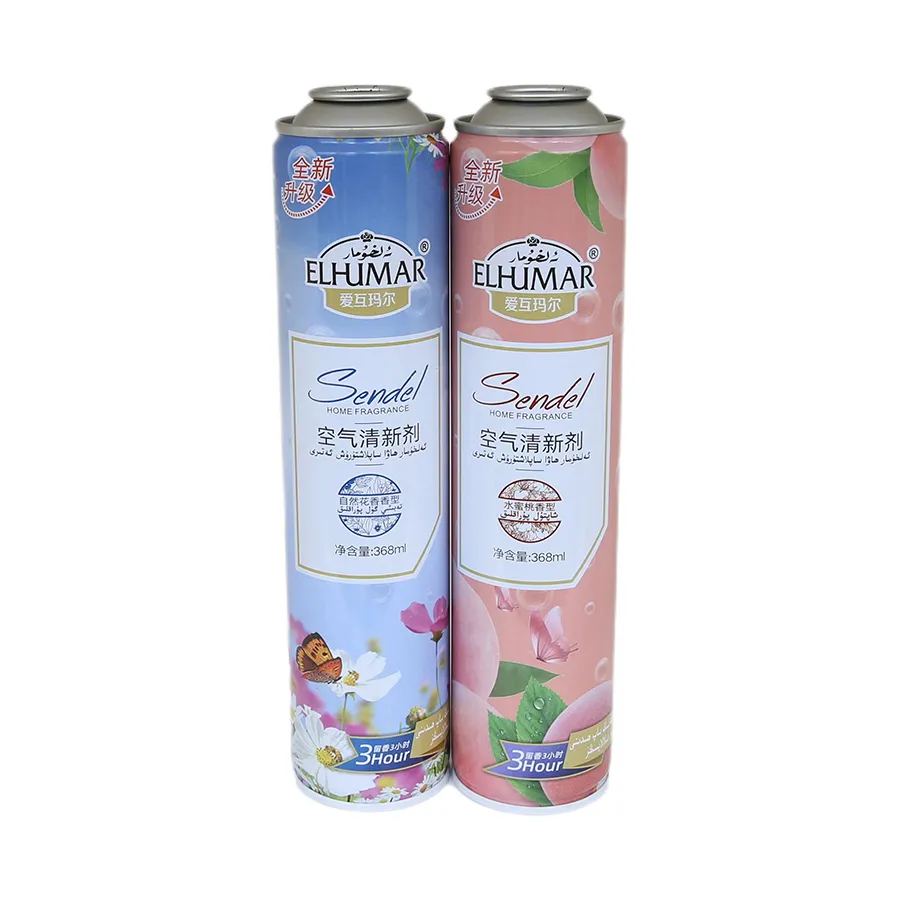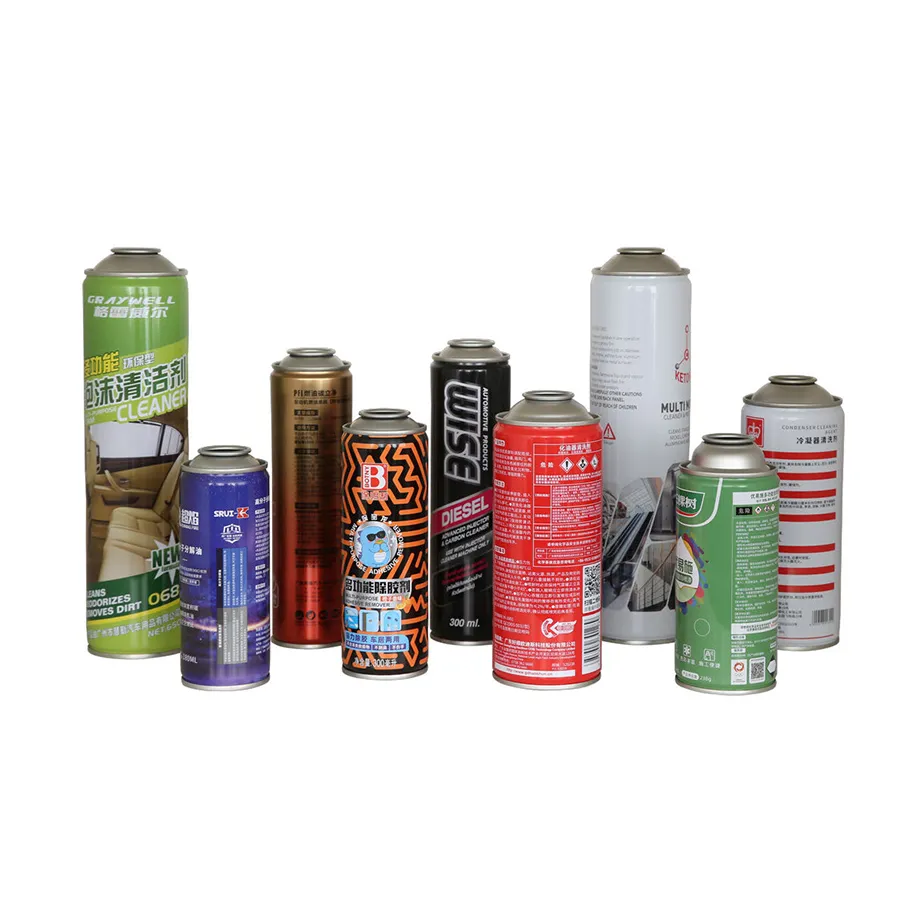Aerosol cans are commonly used in spray products in life, such as cosmetics, cleaning products, pesticides, paints, etc., and are a common and practical packaging form. The reason why it can be widely used in many fields is inseparable from its strong, lightweight and corrosion-resistant structure. The main material for making these aerosol cans is tinplate (electrolytic tinplate), a composite material widely used in metal packaging.
This article will introduce in detail how aerosol cans are made of tin plate, revealing the process and technical details behind this common packaging product.

Introduction to tinplate: the main raw material of aerosol cans
Tinplate, also known as tinplate, refers to a metal material with a pure tin layer coated on the surface of a low-carbon steel plate. Its most important feature is the combination of the hardness of the steel plate and the anti-corrosion of tin, forming a composite material that is both strong and has good protective properties. This material is widely used in many fields such as food packaging, chemical packaging, metal containers, bottle caps, etc., and the manufacture of aerosol cans is one of them.
The main advantages of tinplate are its good corrosion resistance, easy processing and weldability. The hardness of steel can provide physical protection, while the surface tin coating prevents the metal from oxidizing with the external environment and prolongs its service life. Such characteristics make tinplate the preferred material for metal packaging such as aerosol cans.
What is the structure of an aerosol can?
Before we get to know the manufacturing process of aerosol cans in depth, we first need to understand the basic structure of aerosol cans. A complete aerosol can mainly consists of the following parts:
1. Can body: The can body is the main part of the aerosol can, usually made of tinplate steel plate, providing the necessary strength and sealing.
2. Can top: The can top is the upper structure of the closed can body with a valve for spraying substances. It is also usually made of tin plate, but sometimes other materials are used.
3. Bottom cover: The bottom cover is the structure of the lower part of the closed can body, which is usually welded to the can body using stamping technology.
4. Valve: The valve is the core part that controls the spraying of the contents of the aerosol can. It is usually made of a mixture of plastic and metal and is located in the center of the can top.

How are aerosol cans made of tinplate?
Manufacturing process of aerosol cans:
1. Preparation of tinplate sheets
2. Shearing and forming
3. Rolling and welding of cylindrical can bodies
4. Stamping and forming of can bottoms and can tops
5. Assembly of can bodies, can tops and can bottoms
6. Coating and surface treatment
7. Valve installation
8. Air tightness and pressure resistance testing
9. Filling and packaging
The wide application of tin plate makes the manufacturing of aerosol cans have an efficient and stable production process.
Preparation of tinplate sheets
First, the material used to make aerosol cans is pre-treated tinplate sheets. These tinplate materials usually need to be inspected before entering the production line to ensure that their thickness is uniform, the surface is flat, and there are no defects. The standard thickness of tin plate is usually between 0.18 and 0.5 mm, and different applications have different requirements for thickness.
Shearing and forming
Tinplate sheets need to be sheared into sheets of suitable size according to design requirements. The size of the sheared sheets is usually customized according to the specifications of the aerosol cans to ensure accurate matching during subsequent processing. The shearing equipment usually uses a high-precision shearing machine to ensure that the size of each piece of tin plate is accurate and the sheared edges are flat and burr-free.
Rolling and welding of cylindrical can bodies
In the manufacturing process of aerosol cans, rolling the can body is a crucial step. The sheared tinplate sheets are fed into the rolling machine and rolled into a cylindrical can body. The key to this process is to ensure that the shape of the can body is uniform and the seams at both ends remain tight and seamless.
The rolled can body is welded together by welding technology to form a closed cylindrical structure. Currently, the welding methods used are mainly resistance welding or laser welding. The advantages of these two methods are that they can quickly and firmly connect the edges of the can body, and the welding points are small and strong. After welding, the can body usually undergoes a polishing process to remove burrs and welding slag on the weld to ensure a smooth and flat surface of the can body.
Stamping and forming of the bottom and top of the tank
The bottom and top of the aerosol can are usually formed by stamping equipment. First, the tinplate sheet is pressed into the required shape by the stamping equipment. This step requires the use of specially designed molds to ensure that the size and shape of the top and bottom of the tank meet the standard requirements.
The molded top and bottom of the tank are usually designed to be slightly concave, which can increase the structural strength of the tank body and ensure that it can withstand a certain amount of pressure during transportation and use. This is also to prevent the aerosol can from deforming or breaking when subjected to external pressure.
Assembly of the tank body and the top and bottom of the tank
After the molding of the tank body, top and bottom of the tank is completed, the next step is to assemble the various parts. The tank body is usually connected to the top and bottom of the tank by crimping. Crimping is a process method in which the edge of the tank body is curled by mechanical equipment and firmly connected to the top and bottom of the tank.
The key to this process is to ensure the tightness of the crimping seal to avoid any leakage. After the hemming is completed, the shape of the aerosol can is basically formed, but it still needs to be tested for air tightness to ensure that there will be no leakage inside the can when pressurized.
Coating and surface treatment
In order to prevent the chemical reaction between the aerosol can and the internal filler and improve its corrosion resistance, the inside of the aerosol can is usually coated. This coating is usually made of epoxy resin, phenolic resin, etc., which can provide good protection.
The spraying of the inner wall coating is usually completed by automated equipment to ensure that the thickness of the coating inside each can is uniform and fully covered. After the coating is completed, the aerosol can needs to be baked at high temperature to cure the coating and ensure that it can be firmly attached to the metal surface.
In addition, the external surface of the aerosol can is also usually painted, which is not only for corrosion protection, but also to enhance its appearance and market appeal. Common external treatment methods include spraying paint and printing patterns.
Valve installation
The valve of the aerosol can is the core part of controlling the injection of internal substances, so its installation needs to be very precise. The valve is usually made of a combination of metal and plastic. When installing, it is necessary to ensure that the connection between the valve and the tank is airtight to prevent gas or liquid leakage.
During the valve installation process, special sealants are usually required to ensure that the joint between the valve and the tank can withstand the pressure in the tank and that the valve can work smoothly during spraying.
Air tightness and pressure resistance test
The production process of aerosol cans needs to undergo strict air tightness and pressure resistance tests. This is because aerosol cans need to withstand a certain internal pressure during use, and once a leak occurs, it will seriously affect its use effect.
The air tightness test is usually carried out after the tank is assembled, by injecting a certain gas pressure into the tank to detect whether there is a leak. The pressure resistance test is to test whether the tank can maintain structural integrity and not break under a certain pressure by pressurizing.
Filling and packaging
After completing all the above steps, the aerosol can can enter the final filling stage. The filler may be liquid, gas or powdered substance depending on the purpose of the aerosol can. Usually, the aerosol can is sealed immediately after filling to ensure that the internal substance does not come into contact with the outside air. After packaging, the aerosol can undergoes another quality inspection to ensure that it meets the factory standards.

Precautions in the production process of aerosol cans
In the manufacturing process of aerosol cans, there are multiple links that require strict quality control. In particular, the selection and processing technology of tin plate are directly related to the quality of the final product of the aerosol can. Characteristics such as air tightness and pressure resistance are important indicators that determine whether the aerosol can is qualified. Therefore, multiple inspections and quality controls are required during the production process to ensure the safety and stability of the product.

